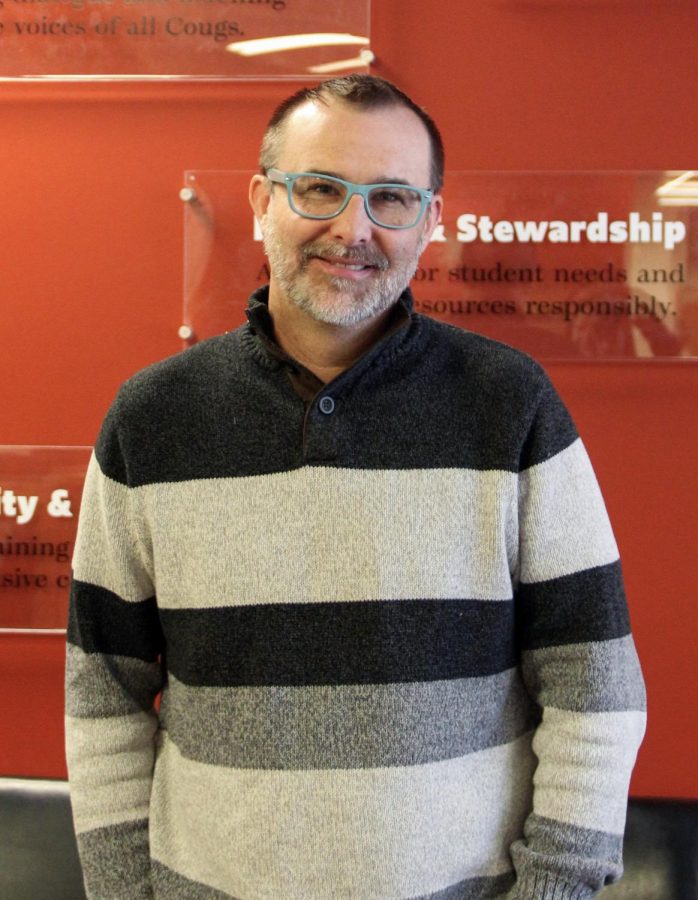ASWSU fees just one part of overall Service and Activity Fees at WSU
Know where your student fees go; how much ASWSU members make
Brian Shuffield, Executive Director of Student Engagement Services
January 27, 2023
Fees that students pay for ASWSU make up 8.14% of the overall Service and Activity (S&A) Fee budget, according to the S&A website.
Matt Shaw, associate director at the Center for Student Organizations and Leadership, said ASWSU fees are part of the overall category of S&A fees.
“WSU is funded through S&A fees which is what students pay as part of enrollment, part of their tuition,” Shaw said. “So ASWSU receives money from those S&A fee allocations, so students do pay into it, but they don’t have a specific fee at WSU.”
This year, each ASWSU Senator receives $990 a semester and the pay for executives varies, he said.
Brian Shuffield, executive director of Student Engagement Services at WSU, said the ASWSU President and Vice President get their cost of attendance at WSU, which includes tuition, fees, housing and dining expenses paid for.
“They serve on a variety of committees, they go to Olympia and lobby with politicians, they meet with university administration on behalf of the students. They really are the students’ representatives for, they speak for the greater good of the student body,” he said.
ASWSU has regular meetings with chancellors and vice-chancellors and have access to the president and upper administration of the university. ASWSU Senators also have access to the administrators of the university, but the executives have more regular access and regularly scheduled meetings, he said.
Shuffield said that he has not heard many concerns from students about how S&A fees are being spent.
“When I say that I hear complaints, there will be a student, or there will be a couple of people who will inquire or want to know where their fees are. For the most part, students are apathetic. I don’t think students look to see where their fees are going or recognize that,” he said.
Shuffield says he talks to student organizers like the Student Entertainment Board to encourage them to put something on their event promotion to let students know that the event they are attending was funded by student fees. Some events will cost money for non-students because students already paid for the event through their S&A fee, he said.
Shaw said that S&A fees don’t get as much criticism as other fees like the Rec Center fee because they benefit such a wide variety of students. The Rec Center fees, which are listed as an S&A fee, are specifically for Rec Center programming, while there is a separate fee for Rec Center membership.
During the pandemic, while students were overall more critical of university fees during that time, some S&A events thrived, Shuffield said.
“We actually had a few programs that really flourished in that setting during that time. I mean, we had like 300 people attend a virtual leadership conference. So that was a very different time,” he said. “I know there was a lot of what should be refunded and what shouldn’t be refunded because of what wasn’t able to happen. But in the end, I know that there wasn’t a lot that was able to be refunded.”
It would be great if more students reached out to ASWSU and the Graduate and Professional Student Association (GPSA), Shuffield said.
ASWSU represents undergraduates while the GPSA represents graduate students and there are separate elections for the two bodies, Shuffield said. According to the WSU Website, GPSA fees account for 5.54% of the overall S&A fee budget. Although they are separate groups, the ASWSU and GPSA collaborate, he said.
Shaw said fees between undergraduate and graduate students can vary. For example, graduate students voted not to pay for the Chinook Student Center, so they do not have access to the center unless they pay for a membership. That is an example of why student government representation matters, Shaw said.
Tuition and fees are separate components at WSU, which is similar to other universities across the country, Shuffield said.
Tuition goes toward the educational goals of the campus while fees go toward everything else that happens on campus, like operating buildings and on-campus events, Shaw said.
If students want to know about how their fees are spent or have questions or issues about anything in the university, they should reach out to ASWSU, because it is the body that is there to represent students and answer the questions, Shuffield said.










